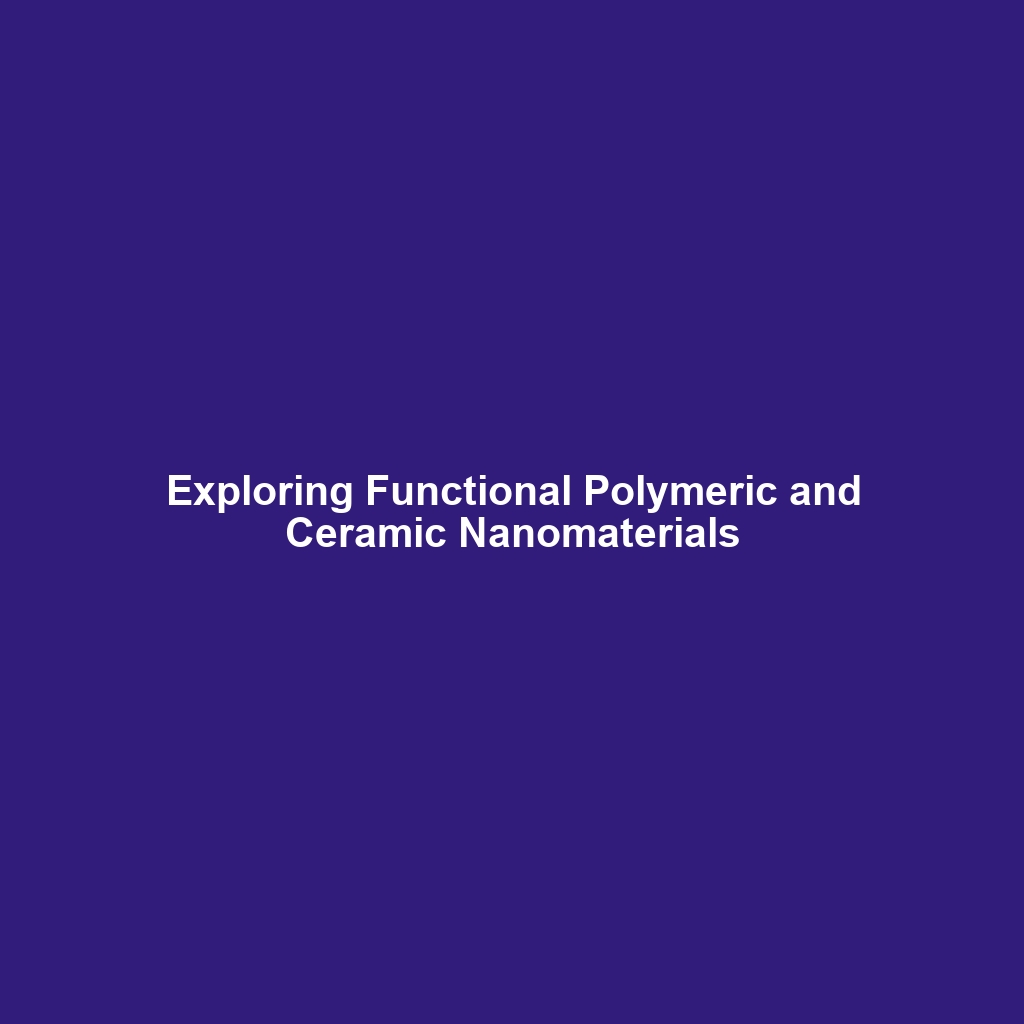Polymeric and Ceramic Nanomaterials: Functional Polymers and Oxides
Introduction
Polymeric and ceramic nanomaterials represent a critical intersection of innovation in the realm of Advanced Nanomaterials. These materials, characterized by their unique structural properties and multifunctionality, play a pivotal role in various scientific and industrial applications. The significance of functional polymers and oxides extends beyond traditional material science, influencing fields such as biotechnology, electronics, and energy solutions. Understanding these materials not only highlights their capabilities but also sheds light on their transformative potential within the advanced materials category.
Key Concepts
Polymeric Nanomaterials
Polymeric nanomaterials are engineered for enhanced functionalities, allowing for tailored properties such as improved mechanical performance, electrical conductivity, and biocompatibility. These materials can be designed to engage in specific interactions with their environment, thus amplifying their utility in applications like drug delivery and environmental remediation.
Ceramic Nanomaterials
Conversely, ceramic nanomaterials exhibit exceptional thermal resistance and stability, making them indispensable in applications that require durability and resilience. The nanoscale modifications in ceramic components facilitate innovations in catalysis and protective coatings, further enhancing the functionality of Advanced Nanomaterials.
Applications and Real-World Uses
The applications of polymeric and ceramic nanomaterials are extensive, spanning various industries and scientific fields. Here are some notable uses:
- Drug Delivery Systems: Functional polymers are utilized to create nanoparticles that can precisely deliver medications to targeted areas in the body.
- Energy Storage: Ceramic oxides play a vital role in enhancing the performance of batteries and supercapacitors.
- Environmental Remediation: Nanomaterials are deployed to remove pollutants from water and air, showcasing their potential in environmental applications.
This illustrates how Polymeric and Ceramic Nanomaterials are effectively integrated into the landscape of Advanced Nanomaterials.
Current Challenges
Despite their advantages, there are several challenges and limitations associated with the study and application of polymeric and ceramic nanomaterials:
- Scalability: Manufacturing processes for these nanomaterials often face difficulties when scaled from the laboratory to industrial levels.
- Regulatory Issues: Uncertainties surrounding regulations for nanomaterials can hinder their market introduction.
- Toxicity Concerns: The health impacts and environmental effects of nanomaterials remain a subject of ongoing research.
Future Research and Innovations
The future of polymeric and ceramic nanomaterials appears promising, with continuous research leading to breakthrough technologies. Key areas of innovation include:
- Self-Healing Materials: Research is progressing towards creating materials that can regenerate themselves after damage.
- Smart Coatings: Development of coatings that respond dynamically to environmental changes is on the rise.
- Nano-Composite Systems: Efforts are being made to combine polymers and ceramics to enhance mechanical and thermal properties.
Conclusion
Polymeric and ceramic nanomaterials, particularly functional polymers and oxides, are at the forefront of advancements in Advanced Nanomaterials. Their unique properties allow for a diverse range of applications, while ongoing research continues to address barriers to their use. As the field progresses, potential breakthroughs will likely reshape numerous industries. For more insights on advanced materials, explore our other articles on Advanced Materials and Nanotechnology.
